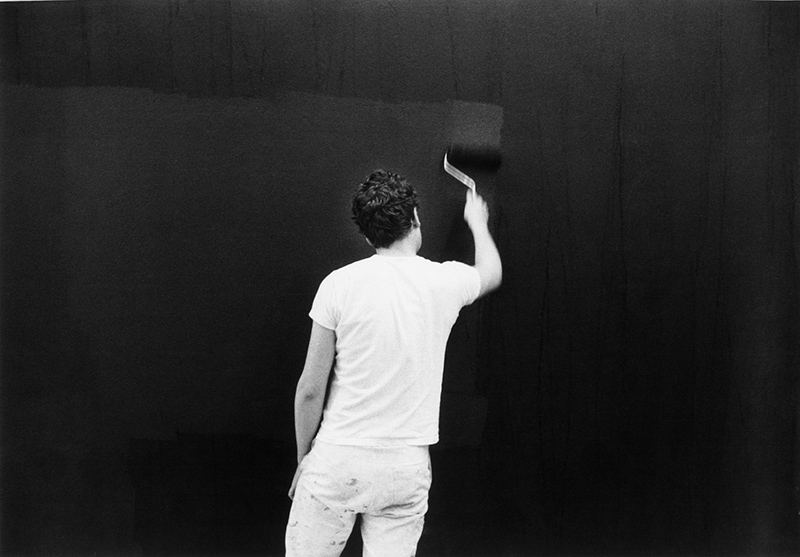ART-PRESENTATION: Günther Förg
 Günther Förg was part of the post-war generation of German artists for whom modernism had become tainted with the horrors of Fascism. Förg’s artistic oeuvre encompasses from sculpted heads through abstract painting to architectural photography, much of Förg’s work displays a preoccupation with processes of fragmentation and visual or physical resistance.
Günther Förg was part of the post-war generation of German artists for whom modernism had become tainted with the horrors of Fascism. Förg’s artistic oeuvre encompasses from sculpted heads through abstract painting to architectural photography, much of Förg’s work displays a preoccupation with processes of fragmentation and visual or physical resistance.
By Dimitris Lempesis
Photo: Almine Rech Gallery Archive
The new exhibition with works by Günther Förg at Almine Rech Gallery in London follows the artist’s reflexive principles. The series of paintings displayed in the gallery’s first room evoke the aesthetics of Ernst Wilhelm Nay, one of the most renowned German painters whose art was considered degenerate by the Nazis. This selection of blue, orange, green and black dot paintings is all the more significant here as the previous exhibition in Grosvenor Hill was actually that of similar works by Nay. Installed on pedestals in the middle of the space room, are on presentation bronze masks. The artist’s sculptural experimentation helped in forging the complex extent of his vocabulary. During the ‘80s, Förg diversified his practice. He began a photographic body of works, which mostly documented modernist architecture such as the legacy of Bauhaus in Israel or that of monumental political architecture in Italy. Hanging on a bicolour wall, a series of five large-scale pictures (1990) taken in a University campus forms a unique and indivisible pictorial-photographic ensemble. They represent parts of buildings at the Sapienza University of Rome, among which are the Mineralogy and the Chemistry departments. The overall campus or “Città Universitaria” was designed by Marcello Piacentini in what became a mainstay of fascist style under Mussolini’s dictatorship. Around the same time, Förg also introduced what is perhaps his most famous series of works, which he realised by covering wooden frames with lead sheets that he then painted with acrylic. Thus, the series of small lead paintings presented in the show appears like a frieze of a bas-relief in front of the artist’s architectural photographs. At the beginning of his career, Förg had painted many black monochromes, the surface of which produced a milky effect. He even realised monochromatic works without paint, such as the colourful textiles he made in homage to his friend and artistt Blinky Palermo, who died in 1977 at the age of 33. In the gallery’s last room, paintings that seem black at first glance actually represent the walls of an apartment. They were inspired after works by Auguste Chabaud, a French Modern painter who depicted scenes of rural life in Provence. Leaving minimalism behind, Förg’s painting changed in the 2000s. He adopted a brighter colour palette and a more expressionist touch to explore various grid motifs in a way that is reminiscent of Cy Twombly’s graphic outbursts. The intent of this “retrospective” exhibition at Almine Rech Gallery is to present the different facets of his oeuvre, which reactivates – all the while questioning the relevance of – modernist canons through painting, photography and sculpture.
Info: Almine Rech Gallery, Grosvenor Hill, Broadbent House, London, Duration 1/2-24/3/17, Days & Hours: Tue-Sat 10:00-18:00, www.alminerech.com
